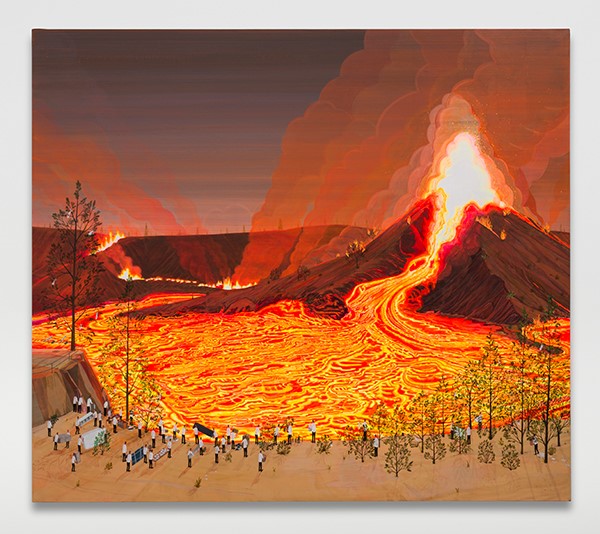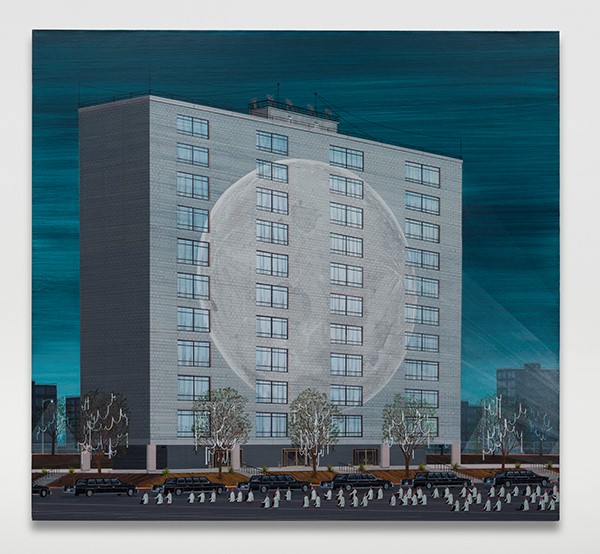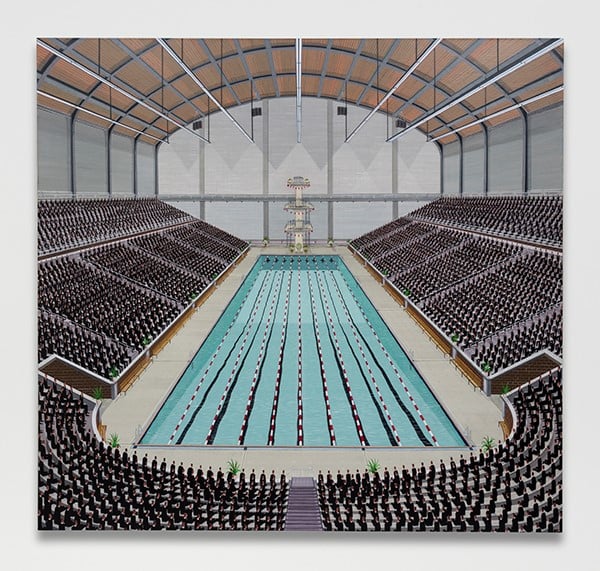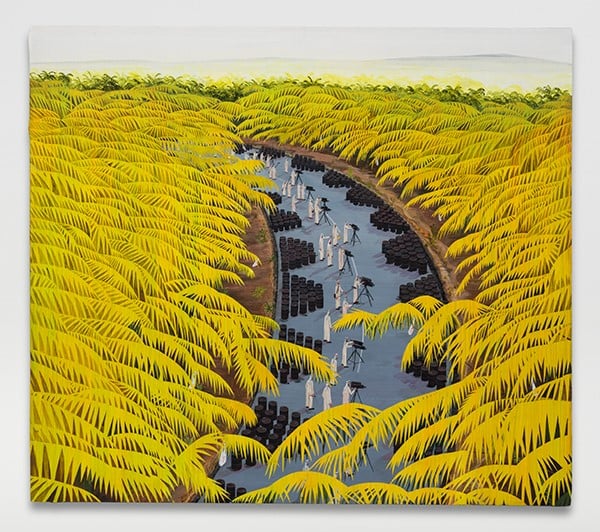People
artnet Asks: Ian Davis and the Art of Politics
He's one painter actively engaging with today's political climate.

He's one painter actively engaging with today's political climate.

Artnet Galleries Team

When Ian Davis puts a brush to his canvas, his inspiration can range from the tumultuous world around him to the hypnotic, rhythmic blues of Jimmy Reed. Based in Los Angeles, the 43-year-old painter sees his oeuvre as a continuum rather than a specific body of work, though he notes that his projects often feel very “of the moment” and reflect the issues he has with authority. And indeed, looking at his works one can feel underlying anxiety and political tensions, such as the eerily uniformed stance of the masses in Climate (2008) or the palpable anger of the protesters in Something’s Burning (2013). Despite these dark themes, however, Davis also constantly strives to weave optimism into his paintings, noting that the world too easily “looks for what’s wrong.”
We recently sat down with the artist to discuss his creative process, the benefits of relocation, and his upcoming “Expert Advice” exhibition at Josh Lilley Gallery.
What are some things that inspire and drive your practice?
These things fluctuate. It depends on what I’m interested in at the moment, which could range from something strange I saw on the street, to a book I’m reading, to personal anxiety. Sometimes ideas come from a healthy place of interest, other times they come from a personal desire to enact some form of revenge. A few of the recent works come from real-life political activities and gestures of resistance. The painting Projection (2014) is based on an event in Maine where the Governor had murals removed in a municipal building. The murals depicted workers and were deemed inappropriate. Apparently depicting workers is Socialist. As a response, people began projecting the image of the mural onto the outside of the building.
Other paintings are made out of thin air, with little or no source material. When I’m really working a lot I’m looking less. My eyes can only handle so much. I often come home from the studio and try to read or watch a movie but my eyes are shot, so I try to get lost in music. Certain kinds of music, with a strong sense of structure or architecture, lend themselves to what I’m doing. Things like Jimmy Reed or Lee Perry or Harmonia, music that has a hypnotic rhythmic element. Overlapping patterns.

Ian Davis, Projection (2014). Courtesy of the Josh Lilley Gallery.
Describe your creative process. What kinds of patterns, routines, or rituals do you have?
Working for me is the result of a routine, but not a conventional one. I go to my studio. Eventually something happens. I look at images all the time (as we all do), but sometimes I go fishing for ideas. Starting paintings and finishing paintings are two different speeds, two different activities. There are work days where I’m just sitting in a chair with headphones on, then there are days where I do nothing but putter around until I do something, then I can leave. Routines are not natural to me, so I think I counter them by trying not to do the same thing every time I’m in there. I spent the last three weeks on a work bender, finishing paintings for this show in London. Finishing things requires the most physical work, just making sure everything is properly described. I work for 20 minutes, pace for 20 minutes. The last layer can be intense.
Tell us about your forthcoming exhibition at Josh Lilley.
I think of what I do as a continuum, rather than bodies or series of works. This show will be nine paintings, most of which are from the last year. It’s a grouping that spans the last year of my life in upstate New York and my first months in Los Angeles. Most of the work has been made here, and the imagery reflects those changes. The show is a window into this particular period of time in which they were made. Despite my efforts to avoid placing them into any particular historical timeline, the work is clearly, to me, very of the moment. There’s a political element as the outer shell, the top layer. Underneath are the more personal motivations, which are often quite obscured. My goal is to figure out why I’m painting the thing I’m painting, on a personal level. This is all buried in the mix, of course. And none of it means anything, of course, until people see them. By that point they make the most sense, and by that point, ironically, I can’t really look at them anymore.

Ian Davis, Broadcast (2014). Courtesy of the Josh Lilley Gallery.
What is your source material for the paintings?
It’s usually a synthesis of a few sources. It could be a newspaper clipping, an image from an old reference book, a still image from a Jacopetti and Prosperi documentary, an Arthur Lee lyric. The landscape and light here in California is becoming important. It can be anything. I’ve become an expert at sniffing out the sort of visual information that looks like it could become one of my paintings, but I’ve always believed that by relocating yourself you are, in effect, shuffling the deck. I figure out on a surface level what is happening in the painting pretty quickly. I describe a setting, then place an activity within that. The underlying motivation usually reveals itself much later.
Who are the characters in your paintings? Are they characters?
They aren’t characters so much as actors. And sometimes they aren’t “acting” at all. They represent the motivation of the mass. They aren’t individuals. You know how you hear about a person getting mugged in broad daylight and nobody does anything about it? Sometimes I think I’m painting all those people who didn’t do anything. In other cases, the people are motivated to act but have no clue how to. Many of the figures are so-called experts. It increasingly seems to me that my subject matter is an extended conversation about my issues with authority. The individual might not exist in my work. I’m not sure. I’m fine with not being sure!
What are you working on at the moment?
I always have work in progress. I like to have 10 or 12 paintings around me, some of which will never make it. They happen pretty slowly, sometimes hundreds of hours on a big painting, and I need a bunch of things going so I can bounce around from one to the other. My conceptual goal at the moment is to find an alternate head space from which I can conceive my work. I’m figuring out how to project and work toward optimism in my paintings, rather than starting from a ‘finger-pointing’ position. Maybe that comes with the painter’s territory, being the god of my own little world. It’s so easy to look around and see what’s wrong. It would be nice to also do the opposite every now and then.

Ian Davis, Construals (2016). Courtesy of the Josh Lilley Gallery.